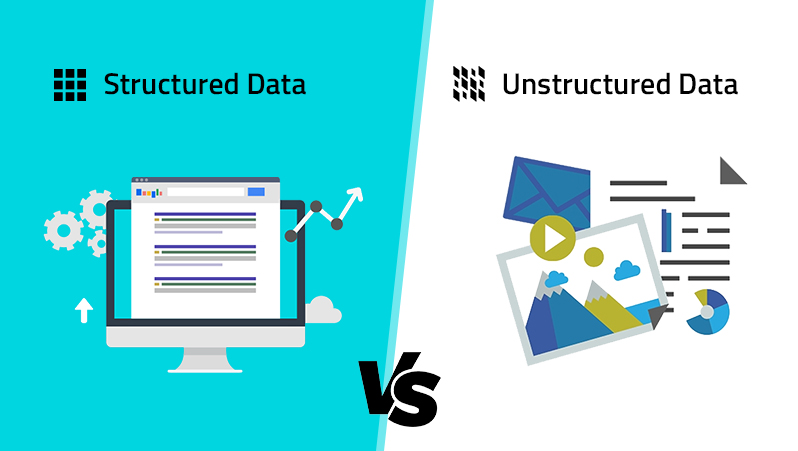There are primarily two different categories of data that any organization handles-Structured data and Unstructured data. Structured data is a particular type that consists of classified data that are easy to search. On the other hand, unstructured data is simply everything except the structured one. It includes but not limited to text files, social media post, and e-mails.
Analyzing structured data is a form of advent and complete technology whereas unstructured data analytics is an industry itself with a noticeable amount of R&D investments.
Data is one of the most precious assets of a company that helps Data analysts and business stakeholders in numerous ways to keep an eye on generating and managing revenue. PayPal co-founder Max Levchin says, “The world is now awash in data and we can see consumers in a lot clearer ways”.
A huge amount of unorganized data may look overwhelming and makes it problematic to obtain the right information at the correct time Understanding the data sources and their destinations is more than important to gain a sound knowledge about the current trend of archiving, discovering and collecting data since stakeholders or analysts depends on data..
What Does Structured Data Refer To?
Structured Data refers to any data that has a particular format and those are easy to digest as well. They usually stay in a particular field in a specific file or record. It may include, dates, groups of words, strings and more.
The example of structure data could be the name or address of a company or even the schema.org mark up over the web.
Sources of Structured Data
There are two primary sources of structured data-
- Human Generated
Input data, clickstream data
- Machine Generated
Point of sale data, financial data, Web activity log data
The combined datum of structured data submitted by each user is of gigantic size. The structured data type is well organized and digestible in an easy way. This helps in analyzing by using data mining tools that involves legacy. This format is searchable enough with the help of algorithms that uses data type and name of the fields (i.e. numeric or alphabetic/date/currency). One can also locate them via queries that are human generated.
Some relevant database applications those works with structured data are-ATM transaction activities, control of inventories, reservation system of airlines and more..
Structured data has a stable position in the data analytics industry irrespective of the rise of plenty of new data sources and the organizations will rely on them in terms of executing their business in a dynamic way.
What is unstructured data?
Commonly, unstructured data refers to binary data. It won’t contain any recognizable structure. It is a vast and unorganized alloy of a lot of information that is not at all useful if not stored in an adequately organized way.
Commonly, unstructured data refers to binary data. It won’t contain any recognizable structure. It is a vast and unorganized alloy of a lot of information that is not at all useful if not stored in an adequately organized way.
Sources of unstructured data:
- Social media:
Every time a customer mentions a product/service/company in a post or comment, it turns into unstructured data.
- Internal collateral:
Videos, presentations, marketing and sales collateral, e-mails are also a good source of unstructured data.
- Customer-generated content:
Online review, a call or e-mail to the customer service, online comments gives birth to unstructured data.
Unstructured data is underdone and disorganized. PDF files, Digital images, Spreadsheets, and social media posts, Emails and Text processor files are fine examples of the unstructured data type. NoSQL databases are most efficient in terms of handling unstructured data.
Data lakes and Hadoop platforms have been innovated through the expansion of collecting unstructured data.
Understanding unstructured data and finding out its insights needs proficient analytics by high standard technical professional and it may look a bit expensive.
Those who can utilize unstructured data can avail competitive superiority. The structured data allows us to avail a comprehensive idea about clients and on the other hand, unstructured data provides us with in-depth understanding about intention and behavior of the consumers.
For an Instance, the techniques that are used for data mining of unstructured data helps organizations in understanding the buying habits , patterns, timing and their emotion for a particular product or service and more.
Structured data can give an exact idea about customers while unstructured data delivers more intense knowledge about customer trends like their product preference and more.
Hope this post helps you to understand the primary differences between structured and unstructured data and their importance in a company. Don’t hesitate to take an efficient, helping hand to manage your unstructured data in order to gain the maximum earnings using them.


